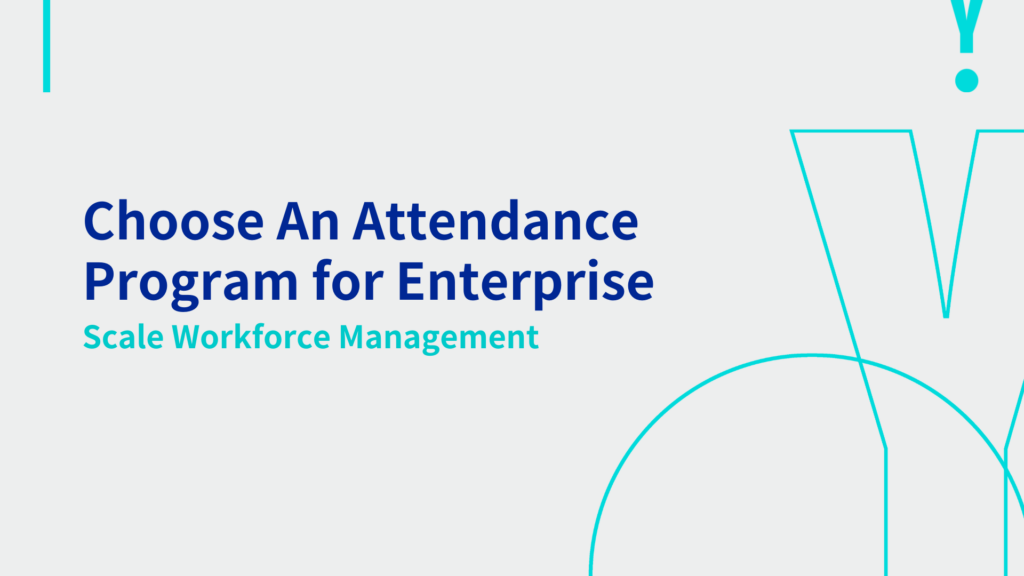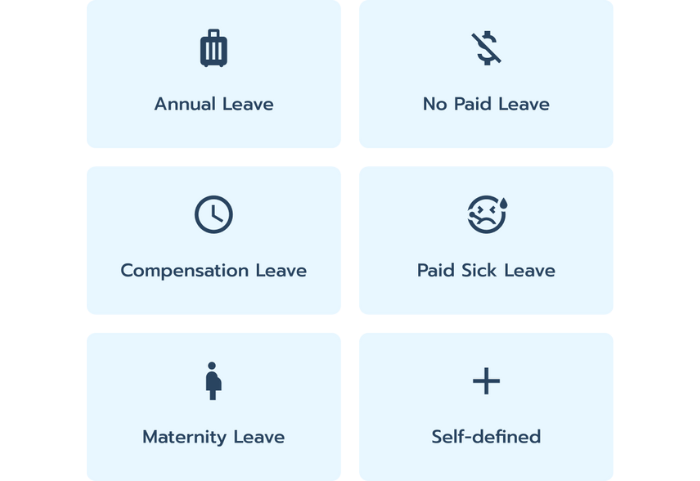
Managing attendance across an enterprise-scale workforce is challenging. With hundreds or thousands of employees, manual processes quickly become overwhelming and error-prone. Multiple shifts, varying work locations, and hybrid arrangements add complexity, making traditional attendance tracking inefficient. HR teams often face data discrepancies, compliance risks, and delayed payroll processing due to outdated systems.
In such a situation, an enterprise-grade attendance program can solve these challenges by providing automated, accurate, and real-time workforce visibility. However, choosing the right platform requires careful evaluation.
Selecting the wrong tool can result in integration issues, poor user adoption, and unnecessary costs. Businesses must therefore assess both functional and technical aspects before committing.
This blog explores how to choose the right attendance software for large-scale workforce management. We’ll cover essential features, selection criteria, integration tips, and long-term benefits to ensure your investment delivers measurable productivity improvements.
- Why Enterprises Need A Robust Attendance Software Solution?
- Key Features to Look for in An Enterprise Attendance Program
- Evaluating Software Scalability And Performance
- Integration with Existing Enterprise Systems
- Ensuring Data Security Along with Compliance
- User Experience And Adoption Rate
- Customization for Enterprise Policies
- Vendor Reliability And Support Services
- Cost Considerations for Enterprise Attendance Solutions
- Steps to Implement Attendance Software Successfully
- End Note
Why Enterprises Need A Robust Attendance Software Solution?
Enterprise workforce management involves multiple layers of complexity that simple time-tracking tools cannot handle effectively.
Here are the primary reasons enterprises need robust attendance solutions:
- Scalability: Support for thousands of employees without compromising performance or data accuracy.
- Compliance: Automated adherence to labor laws, overtime rules, and union agreements.
- Integration: Seamless connectivity with payroll, HRMS, and ERP systems.
- Real-Time Data: Immediate visibility into attendance, absenteeism, and shift patterns.
- Multi-Location Support: Uniform tracking across different branches, remote teams, and international offices.
These factors ensure enterprises can manage attendance efficiently without overburdening HR or IT teams.
Key Features to Look for in An Enterprise Attendance Program
Choosing a cloud HR software for employee attendance generally requires identifying features that meet both current and future needs.
1. Real-Time Attendance Tracking
Real-time tracking ensures instant visibility into employee presence and absenteeism. It allows HR to respond quickly to staffing gaps.
2. Multi-Device Accessibility
The system should work across desktops, mobile devices, and biometric terminals for maximum accessibility.
3. Customizable Shift Scheduling
Custom shift management supports flexible schedules, split shifts, and rotating rosters without manual adjustments.
4. Geofencing and GPS Tracking
For field staff, GPS tracking ensures accurate location-based attendance verification.
5. Compliance & Policy Management
Automated policy enforcement helps meet labor law requirements and reduces compliance risks.
6. Integration Capabilities
The solution should integrate seamlessly with payroll, HRIS, and analytics platforms.
Evaluating Software Scalability And Performance
Enterprise systems must handle large data volumes without delays. Scalability is critical for future-proofing your investment.
When evaluating, consider:
- Data Handling Capacity: Can it process thousands of records daily without performance drops?
- Server Reliability: Does the provider offer high uptime guarantees?
- Cloud Vs On-Premises: Cloud offers scalability, while on-premises may provide more control.
A scalable solution ensures consistent performance during peak periods like payroll processing.
Integration with Existing Enterprise Systems
Integrations are essential for ensuring smooth data flow across departments. Without an efficient attendance program, HR teams face duplicate entries and mismatched records.
Look for:
- API Support – Enables connectivity with ERP, HRMS, and other enterprise platforms.
- Data Synchronization – Real-time syncing prevents payroll delays.
- Single Sign-On (SSO) – Simplifies user access and security.
A well-integrated system eliminates silos and streamlines end-to-end workforce management.
Ensuring Data Security Along with Compliance
Attendance data includes sensitive employee information, making security a top priority.
Evaluate the software’s:
- Data Encryption: Protects information during storage and transmission.
- Access Controls: Restricts data to authorized personnel only.
- Audit Trails: Tracks all changes for compliance verification.
- Regulatory Compliance: Meets GDPR, HIPAA, or other relevant requirements.
Failure to secure attendance data can result in financial penalties and reputational damage.
User Experience And Adoption Rate
Even the most advanced software is ineffective if employees find it difficult to use.
Focus on:
- Intuitive Interface: Simple navigation ensures quick adoption.
- Mobile Accessibility: Enables remote or on-field staff to log attendance easily.
- Minimal Training Requirement: Faster onboarding reduces disruption.
User-friendly systems promote compliance and accurate data entry.
Customization for Enterprise Policies
Enterprise attendance policies vary widely. The right software should adapt to your organization’s specific rules.

Key customization options include:
- Leave Policies: Define annual, sick, or emergency leave types.
- Overtime Rules: Custom cloud HR software can automate overtime calculations based on predefined criteria.
- Holiday Calendars: Manage regional or country-specific holidays easily.
Therefore, flexible configuration ensures the system aligns with business operations without frequent IT intervention.
Vendor Reliability And Support Services
Software reliability usually depends on vendor expertise and responsiveness.
So, check for:
- Proven track record, like references from other enterprise clients.
- 24/7 support is critical for global operations.
- Regular updates keep software secure and functional.
- A dedicated account manager properly ensures personalized assistance.
Hence, reliable vendor support minimizes downtime as well as maximizes ROI.
Cost Considerations for Enterprise Attendance Solutions
While price should not be the sole deciding factor, it impacts long-term sustainability.
Consider:
- Subscription Vs Perpetual Licensing: Choose based on budget and scalability needs.
- Implementation Costs: Includes setup, training, and integration.
- Maintenance Fees: Ongoing expenses for support and updates.
Transparent pricing helps avoid hidden costs that can strain budgets.
Steps to Implement Attendance Software Successfully
Implementation determines how quickly the system delivers benefits.
1. Define Objectives
Outline goals like reducing absenteeism, improving compliance, or streamlining payroll.
2. Involve Stakeholders
Engage HR, IT, and finance teams in decision-making.
3. Conduct A Pilot
Test the system with a small group before full deployment.
4. Train Users
Provide role-specific training to ensure smooth adoption.
5. Monitor & Adjust
Collect feedback and fine-tune configurations as needed.
End Note
Choosing the right attendance program for an enterprise-scale workforce is a strategic decision impacting efficiency, compliance, and employee satisfaction. Therefore, by prioritizing scalability, integration, user experience, and vendor reliability, businesses can select solutions that meet both current and future needs.
The right system will streamline operations, reduce administrative burdens, and provide accurate insights for better decision-making. With careful evaluation and structured implementation, attendance software can become a cornerstone of enterprise workforce management excellence.
Hence, consult YOOV to install the best attendance software solution for your business offices.
Connect with YOOV

WhatsApp:Click Here
Email:hello@yoov.com
Website:https://www.yoov.com/